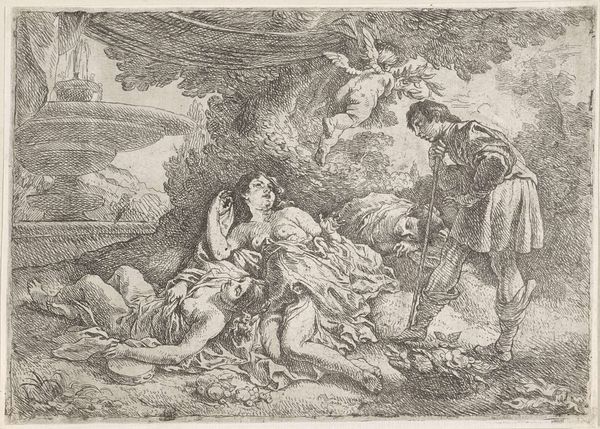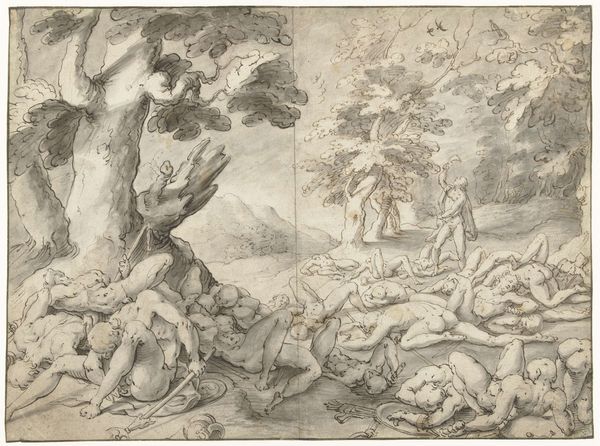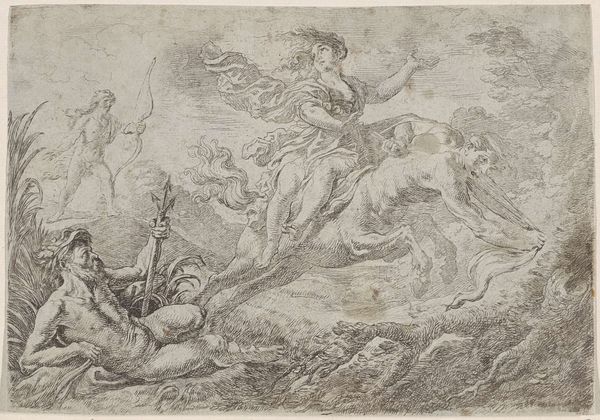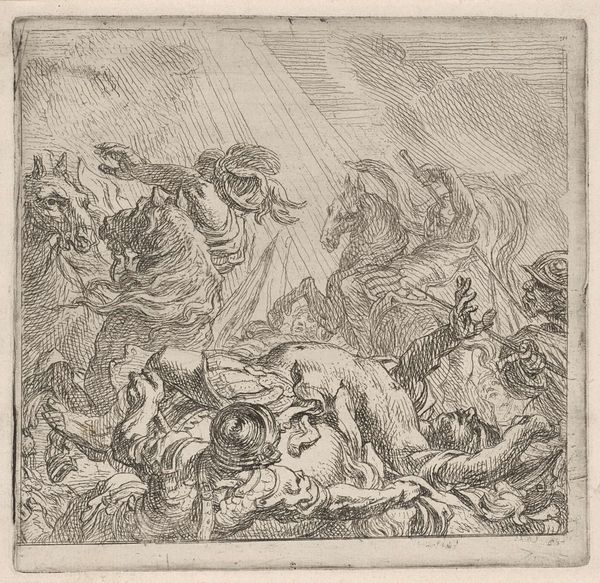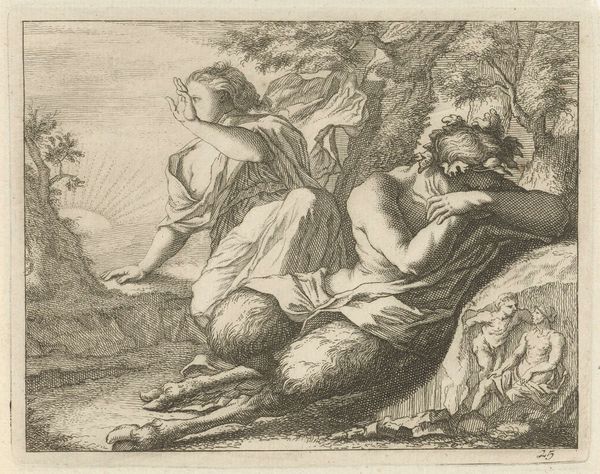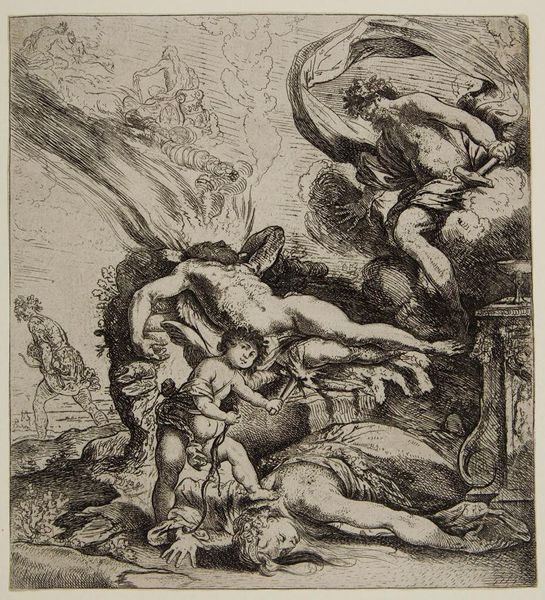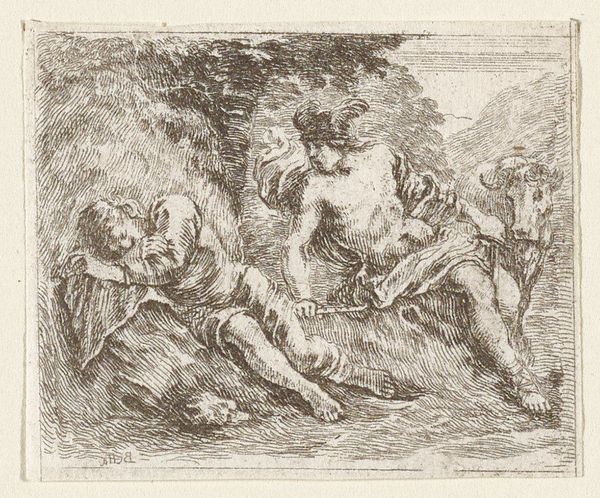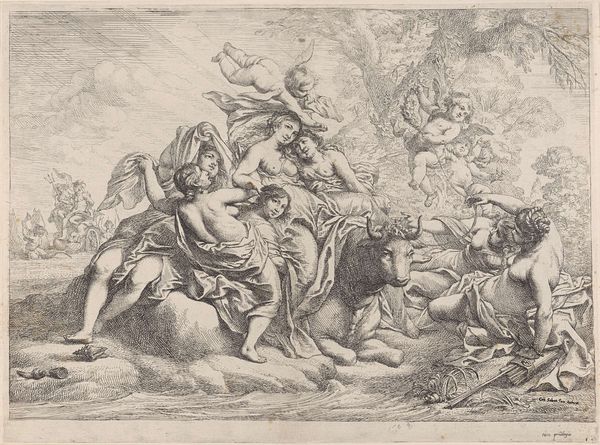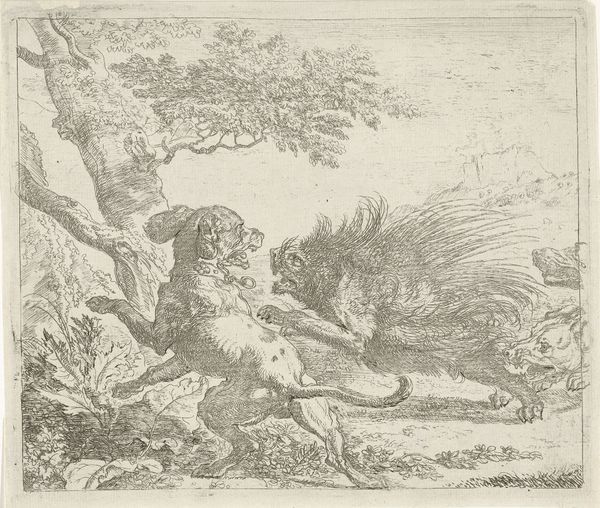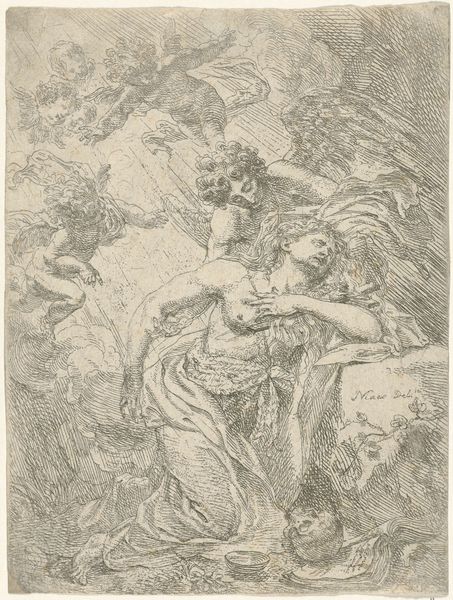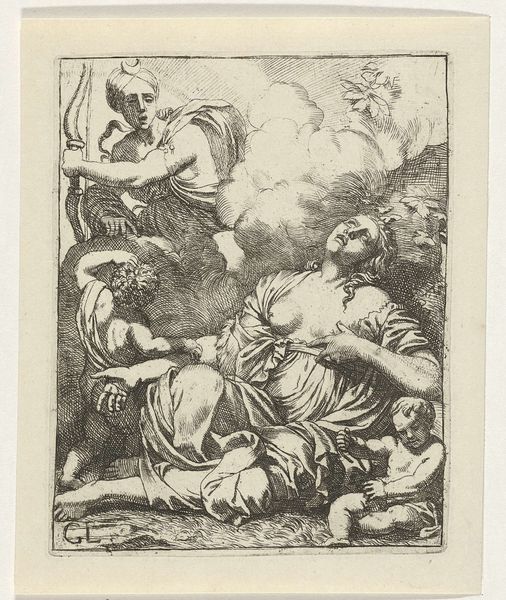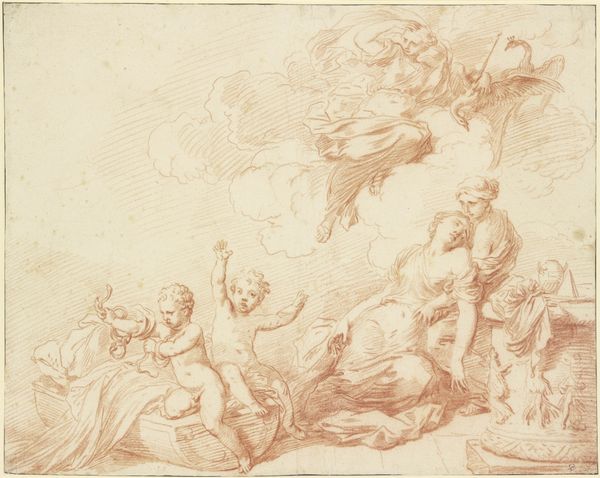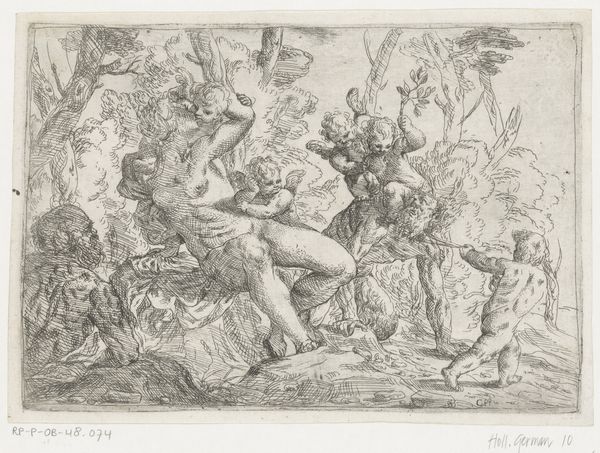
drawing, ink
#
drawing
#
baroque
#
pen drawing
#
figuration
#
ink
#
genre-painting
#
history-painting
Dimensions: height 200 mm, width 278 mm
Copyright: Rijks Museum: Open Domain
Cornelis Schut made this print, Cimone en Ifigenia, using etching, a technique known for its intricate lines and tonal gradations. The fine lines of the etching beautifully capture the sensuous scene of discovery, a method capable of producing numerous copies, making art more accessible beyond elite circles. Etching involves coating a metal plate with wax, drawing through the wax to expose the metal, and then immersing the plate in acid. The acid bites into the exposed lines, creating grooves that hold ink. The plate is then pressed onto paper, transferring the image. This process allowed Schut to create delicate details and textures, from the pastoral landscape to the figures' reclining bodies. Beyond aesthetics, the process of etching reflects the democratization of art production. Unlike unique paintings or sculptures, prints could be reproduced and distributed, connecting the artist to a broader audience and influencing art and visual culture through widespread imagery. The work involved reflects a shift towards a more mediated and reproducible form of artistic expression.
Comments
No comments
Be the first to comment and join the conversation on the ultimate creative platform.
